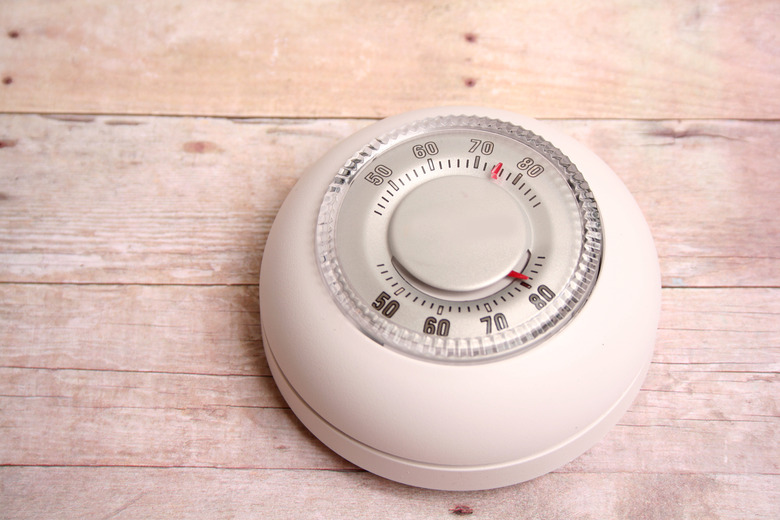How To Troubleshoot A CT87K Thermostat
We may receive a commission on purchases made from links.
Not everything in today's world is digital. The Honeywell company states that its CT87K model thermostat has a place on the wall in more of the world's homes than any other thermostat make or model. The understated round white device has two temperature bands, one for the setting and another that shows the room temperature. It does not have any of the features of the newer programmable smart thermostats, and it can only run a furnace. In fact, it takes only two or three wires to connect the CT87K, so even troubleshooting options are limited.
Check for Correct Wiring
Check for Correct Wiring
Confirm that you have the device wired correctly and that the connections are good. The CT87K is only for limited setups; most thermostats will control a furnace with two wires, typically red and white. If you have additional wires coming from the wall at the back of the thermostat, you will need to replace the CT87K with a device offering more terminals and controls.
Inspect for Damage
Inspect for Damage
Examine the internal components of the thermostat. Even though the CT87K is compact and sits nearly flush against the wall, it may have been struck accidentally during, for example, a child's game or by inattentive furniture movers. If a nondigital thermostat is hit hard enough, the jarring force can knock it off-level causing setting and temperature discrepancies.
Use a level placed above the thermostat to correct the problem. Look for broken plastic and wires, loose screws or foreign matter. Check for any unraveling of the bimetal coil, a curled strip made of two metals that expand at different rates and determine the room temperature. Unraveling can occur as a result of damage or the age of the thermostat. While screws can be tightened and dust or debris removed, any damage to the thermostat unit uncovered during troubleshooting likely will require the installation of a new thermostat.
Listen for the Click
Listen for the Click
Turn the dial on the face of the CT87K thermostat to increase the temperature setting. This troubleshooting step will confirm whether the furnace is receiving a proper activation instruction from the thermostat. A click at the thermostat generally indicates the connection has been made. If, however, the blower does not kick on, it may indicate a more significant issue with the furnace itself.
Analyze the Environment
Analyze the Environment
Determine whether the thermostat's room temperature reading is being affected by appliances or drafts. Take temperature readings in various parts of the home to find any significant discrepancies. Turn off heat sources near the thermostat, like an oven or heater, to see whether the temperature drops or whether the heat will turn on.
If the furnace will not shut off, make sure windows and doors near the CT87K are closed and locked to prevent drafts. If troubleshooting cannot resolve the issue, consider relocating the thermostat to another central spot inside the home. Be sure you're placing it in a well-insulated area.
